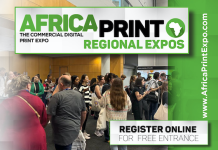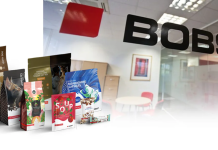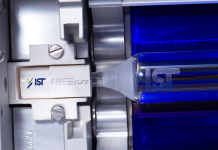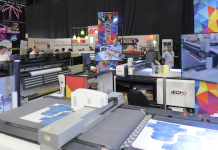According to Christophe Bossut, co-founder of Argo, to revolutionise a service, a product or an object, this requires the total understanding of previous technological developments (their evolution) to make it possible to open up new fields of possibility and – in direct commercial terms – to answer the new demands set by the marketing community as ‘brand owners’. Packaging cannot avoid this kind of transformation – nor can commercial print in general.
A global trend exists towards enhancing the human senses, evidenced for example in GPS, driving assistance, decision-assistance, automated translation etc. The packaging industry will not escape from this digital surge, as it becomes ‘intelligent’ and an active communication tool for use by humans whatever their profile: customer, seller, manufacturer, prospect, curious onlooker, controller or regulator. The rapid advance of technologies is such that the scope of possibilities is ever-widening.
Image recognition and computer vision are two technologies that point to a major revolution in the interaction between humans and packaging. The evidence is clear, we only need to look at how new usage cases have emerged over the past two years. Within the space of a few months the notion of ‘scan’ has become an accepted, understood usage behaviour – you just need to look at YUKA and the explosion of barcode scanners in the Apple or Google stores.
Funnily enough, the simple scanning of an EAN 13 on a product was already commonplace since the late ’70s, but until recently the decoding of a barcode only allowed connection to a product repository on a local network and to extract basic information such as the price. Moreover, the decoding tool used – the barcode reader – was not at all widespread. Today its smartphones with cameras, tomorrow its connected reading glasses, which all open up the field of possibilities in an open internet where all information systems are searchable in real time by API.
YUKA has just fulfilled its mission with real-time information against a background of consumer distrust with consumer products that are increasingly criticised for their declaration of origin or their composition.
The packaging market and brand owners therefore have a need to integrate these dimensions. Leading brands have already started to integrate this perfectly, just take a look at the latest advertising by NARTA. The scenario between the product and the consumer via a smartphone is total proof – our phone becomes an oracle or lens offering greater vision in our real-time world.
Instead of using Google and typing a query, we start scanning our environment for additional information, becoming the physical equivalent. Augmented reality with print therefore becomes the key point, and later we will talk specifically about the augmented document. If today it is becoming more and more natural to take out your smartphone to ‘scan’ a barcode, a QR code or even an image in order to obtain information, then you as professionals of the graphics industry have the same opportunity to offer your customers such interactive content benefits.
So today, where are we? It is now necessary to become aware of and prepare for the issues surrounding the emergence of the virtual editorial. Everything starts from the PDF file, which is the starting point for every printed and packaging production item.
Today the PDF file (the document) embeds (or can embed) all the information needed for the printing job to be completed, e.g. colour space, separation, content, cut-out shapes, folding layers, etc. The PDF then enters a prepress flow to feed the entire graphic production chain.
What about connectivity elements? Except from URL, QR code or an EAN13, the PDF does not embark anywhere and yet, from here, the printed packaging facets (sides, folds, faces) can each embed layers of ‘virtual info’ that are readable by end-customers even in mass volumes, by simple scanning either the packaging itself or the various codes present (QR code, 2Dcode, CodeBarre), or by reading the PDF via a simple browser that activates or hides the additional layers.
Augmented reality solutions give access to virtual editorial – a real post-manufacturing era issue – to a campaign manager (digital on PDF or physical on paper) and to a panel of players (App, WebApp, WebAR or simple browser for enhanced PDF).
The packaging-production companies have seen this new segment appearing as a natural evolution of their own production execution process. The final printed packaging object becomes itself a communication tool and, in all possible ways, it is the end-user who will choose their way of interaction – Image Recognition and Augmented Reality, Scan Code, or even activation of virtual layers in the digital format itself, the PDF. In all these cases it is happening through a simple Smartphone, but also emerging and soon to be commonplace through the glasses you wear.
Most professional solutions on the market offer a cloud storage solution for all additional virtual content and to connect to the printed document. Only a few publishers embed those contents in the original PDF source file without changing the integrity of it. For graphic designers, it is compatible with the PDF/X and PDF/A standards and supports up to the PDF version 1.7. Finally, and this is the real challenge: all the augmented content can be modified in real-time, post-print.
Personalisation in post-print is finally possible and sweeps away the cumbersome control process of superpersonalisation promised by digital printing. However, these two worlds won’t clash, on the contrary they will be totally complementary: one by the personalisation of segments, the other by the personalisation of the end-user.
As we have seen, the new usage cases spread very quickly, since the technology makes it easier to access a useful service. The case of YUKA is interesting because it is easy to browse the database of the Open Food Fact through the barcode without having to go through a conventional search for information through a search engine and give a score for a product. It has become so viral that manufacturers have to finetune and adapt their product formulations in order to increase their scores on such end-user apps. Such is the modern cauldron of increased consumer power. For the graphics industry it is still indispensable to be able to exist in both of these parallel worlds, digital and non-digital; but the graphics market is becoming digitalised and will so continue with parallel editorial content on all documents to make them in the end ‘augmented’.
The barrier of downloading applications has fallen away, either because the applications become more social or they offer easier access to them. Various information is accessible either because the WebAR no longer requires a simple browser to trigger the camera of your smartphone or because live augmented experiences can be experienced through a website.
virtual.drupa 2021 is the perfect time to assess the challenges ahead and the impact of any emerging technologies. virtual.drupa and the touchpoint packaging will offer insights into augmented reality technologies printed onto documents and products. Various conferences will also deal directly with customisation and personalisation for connected consumers and ecommerce.
What is more natural than connecting a PDF to its stream by increasing HTML5 layers related to manufacturing, commercial, technical and other elements and all this in a blockchain? What is more natural than the printed end piece having the same digital information embedded and directly available by ‘scanning’ the document thanks to image recognition?
What is more natural than letting the different actors access different information depending on their profile? What could be more natural than transforming the document or the package into a real communication piece with the final recipient and this way transforming it into a marketing engagement tool?
All these changes open up new markets and will lead to new behaviours by packaging printers, converters and brand owners. The consolidation of different technologies is leading to the emergence of new channels and usages for the printing and for the packaging industry.
DRUPA
https://www.drupa.com





















